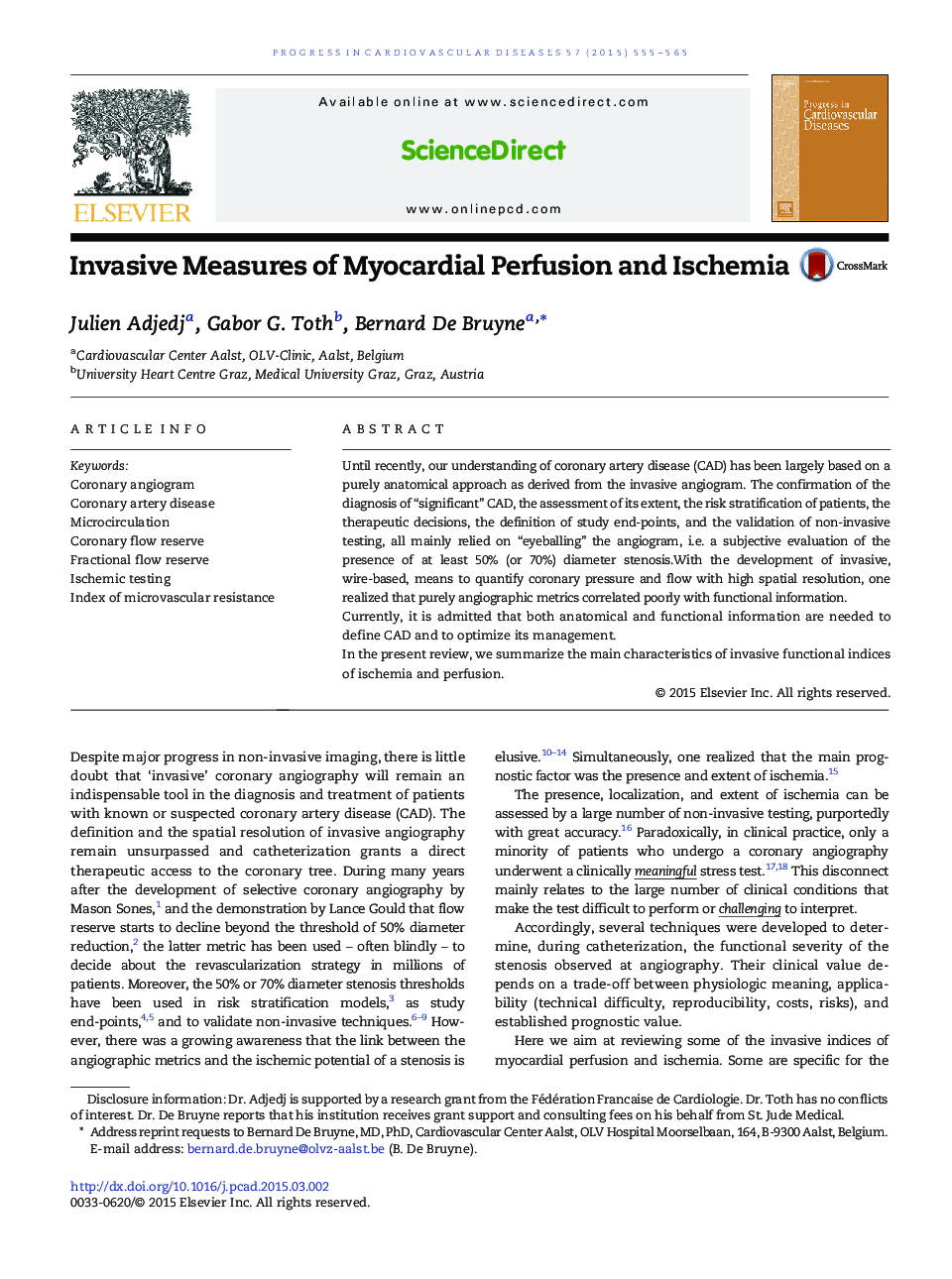| Article ID | Journal | Published Year | Pages | File Type |
|---|---|---|---|---|
| 3006453 | Progress in Cardiovascular Diseases | 2015 | 11 Pages |
Until recently, our understanding of coronary artery disease (CAD) has been largely based on a purely anatomical approach as derived from the invasive angiogram. The confirmation of the diagnosis of “significant” CAD, the assessment of its extent, the risk stratification of patients, the therapeutic decisions, the definition of study end-points, and the validation of non-invasive testing, all mainly relied on “eyeballing” the angiogram, i.e. a subjective evaluation of the presence of at least 50% (or 70%) diameter stenosis.With the development of invasive, wire-based, means to quantify coronary pressure and flow with high spatial resolution, one realized that purely angiographic metrics correlated poorly with functional information.Currently, it is admitted that both anatomical and functional information are needed to define CAD and to optimize its management.In the present review, we summarize the main characteristics of invasive functional indices of ischemia and perfusion.
